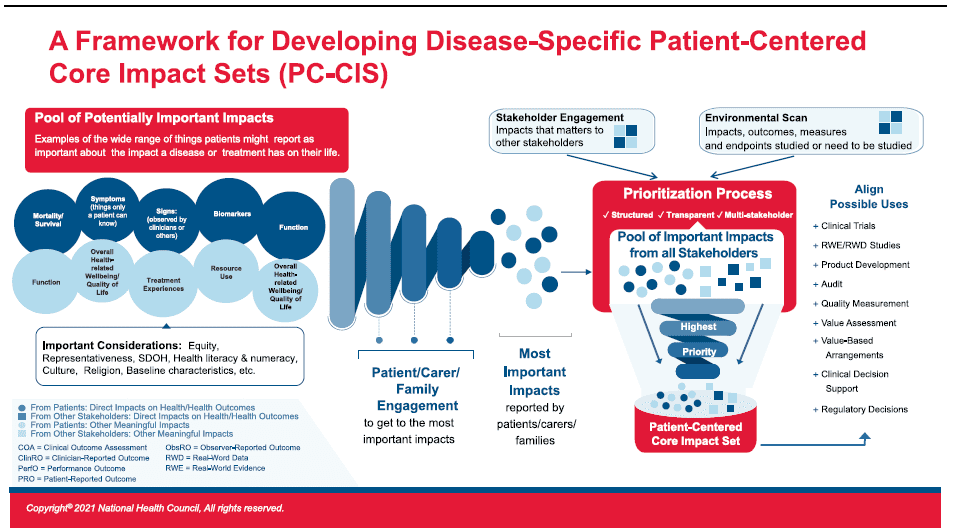What is a “patient-centered core impact set”?

Patients want new treatments to improve their quality of life. However, do typical patient reported outcomes adequately capture new treatment’s impact on factors that patients care most about? A paper by Perfetto et al. (2022) argues that the answer is ‘no’.
The article notes that not only do patients want improved functional status, but also fewer days in the hospital and avoiding cases where there is an “;inability to plan’ and disruptions to work/school.” Further, the other propose developing patient-centered core impact sets (PC-CIS). What is PC-CIS?
…patient-centered core impact sets (PC-CIS) [are] a patient-derived and patient-prioritized list of impacts a disease and/or its treatments have on a patient (and/or their family and caregivers). Intentionally broad and inclusive, the term “impacts” includes short-term and long term health outcomes and any other related implications (e.g., carer/family stresses, economic burden, career loss).
The authors group the impacts into disease related impacts (e.g., quality of life, functional status), treatment related impacts (e.g., adverse events, risk of failure), financial-related (e.g., impact on career, insurance coverage) and impact on family/caregivers (e.g., stress on family, family time commitment). There have been a number of core outcome sets (COS) developed; in fact, the University of Liverpool’s Core Outcome Measures in Effectiveness Trials (COMET) Initiative houses a database of published COS. To move from COS to prioritized PC-CIS, the article cites the National Health Council (NHC) framework for developing a PC-CIS (shown in the figure below).
There are a number of challenges to implementing PC-CIS. These include (i) a PC-CIS may need to be developed for each disease, which is a challenge due to the volume of diseases, (ii) PC-CIS for each disease may vary by country as well, (iii) there is a lack of a standardized process for developing PC-CIS, and (iv) it is unclear which institution(s) should be responsible for developing PC-CIS. Despite these challenges, properly measuring how treatments impact the outcomes patients care most about is a laudable goal.







